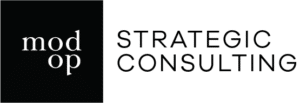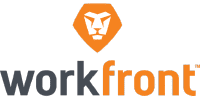Take a lesson from Formula One teams about how to execute under pressure.
Managing a business-to-business growth company during an economic downturn has several themes in common with managing an automobile racing team. In racing the objective is to keep the pedal to the floor to achieve your race day goals by making the podium. If you achieve your goal, no one is getting yelled at for going through a few sets of expensive tires in the process. Likewise, in business growth, if you overdrive revenue, the management of expenses becomes less granular in focus during normal times.
Nothing captures a race team management environment better than the popular Netflix series “Drive to Survive.” The show highlights what Formula One racing is famous for: teams striving to execute a strategy under pressure. New constraints and challenges are introduced every season. As these obstacles are presented, you’ll never hear a Formula One team manager say: “To solve these constraints, let’s make our team less competitive.”
As we enter what most economists predict as a global recession, business leaders need to be thinking the same way: how to manage the constraints that the recession presents while making your company stronger and more competitive.
What is the business strategy growth formula?
There is a simple formula for achieving growth in business-to-business environments. On the top side of the equation, the focus is on building a highly satisfied customer base. Keeping your current customers satisfied encourages them to buy more of what you offer. They also take your company with them as they change employers. And they’ll tell their industry peers great things about your role in enabling their greenfield growth, creating possibilities for new customers.
On the bottom side of the equation, the focus is on building highly motivated workforces and helping your employees build the skills they need to meet your business objectives. Your workforce strategy also must be cognizant of growing the careers of your employees in the process. If you ignore their careers and well-being, they will leave you.
If you are successful in your workforce strategy, you will end up with an organization of common people who can achieve uncommon results. They will also bend over backward to meet your customer satisfaction goals, bringing the formula full circle.

Next recession’s impact on the formula
The next recession we are likely facing and the post-pandemic era have some characteristics that make this formula particularly challenging. Let’s start with 3 key points in your workforce.
- The cost of living increases on core necessities, driving wage requirements in a way that you cannot ignore. Fun environments with challenging work will not be enough to prevail when employees can’t afford the rising costs of basics in their lives.
- Continuing labor availability challenges will add to the costs of future hiring. Avoid the temptation to use layoffs and standard headcount cost-cutting plays, even if this has historically worked for you. Put simply, there is no quicker way to upset your formula balance than through tactical cut costs. Neither your customers nor your employees will give you wiggle room if you cry “recession!” to justify reduced services or employee investment.
- On the top side of the growth equation, a component of customer satisfaction is going to be exceeding customer expectations as you help them navigate their own cost challenges. You can raise prices, but it will likely land you on a list of your customers’ cost-cutting initiatives. You will have to be more strategic than issuing “me too” price increases and generate a cash flow plan.
Does this sound impossible? It’s not, but it does require the creation and execution of one or more very pointed strategies.
Tough times require more facts
Net Promoter Score data will not be enough
For a growth business to navigate this recession, business owners and overall leaders are going to have to start with truly understanding costs that support their strategic growth plan. From a successful customer experience perspective, Net Promoter Score data might not be enough. Leaders must quickly build support for creating and maintaining a fact base that includes both their customer’s true near-term needs as well as competitive threats.
Infrastructure spending will need to be optimized
From an operational cost perspective, infrastructure spending will have to be evaluated. In some cases, cost optimization objectives can be achieved through basic vendor management techniques. In the case of IT, market disrupters have introduced entire segments of solutions that enable organizations to do more with less. These opportunities will have to be evaluated against strategic goals. Plans will have to be created that allow for investment in new, cost-efficient approaches while retiring less efficient, more costly solutions in an EBITDA-friendly way.
Human capital will have to be your greatest asset
This is the most complicated and sensitive area in this recession. Current skills capacity will have to be evaluated against your growth strategy to ensure organizational changes and cost optimization do not render companies weaker. The same holds for any recession-driven decisions, such as location, that may be driven by short-term hikes in global energy costs, supply chain issues, and other fallout from the events in Eastern Europe.
Next steps to recession-proof your business
The first question a CEO should be asking their growth business leadership team is, “How do we minimize the impact of this recession and come out of it in a way better position to resume our aggressive growth plans?”
The second question each leader in the room should be asking is, “Do we have the confidence and the bandwidth to do this right, or do we need to consider outside help?”
If the answer to the second question is that you have the confidence and the bandwidth to approach this internally, you should begin immediately. If you aren’t 110 percent confident with your team’s ability or bandwidth, get help with your strategic planning as soon as you can.
Are you ready to optimize and innovate your processes to help recession-proof your business? We help organizations like yours find underutilized funds in their tech stack and reapply them to give you a stronger, more competitive standing. If you’re ready to do more with the resources you already have – we should talk.
















